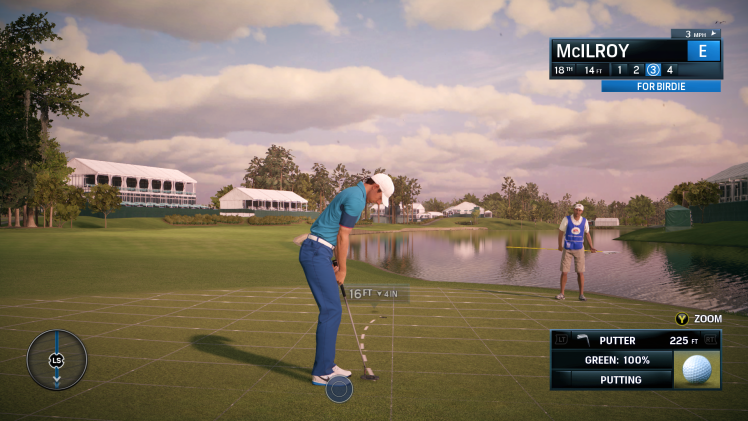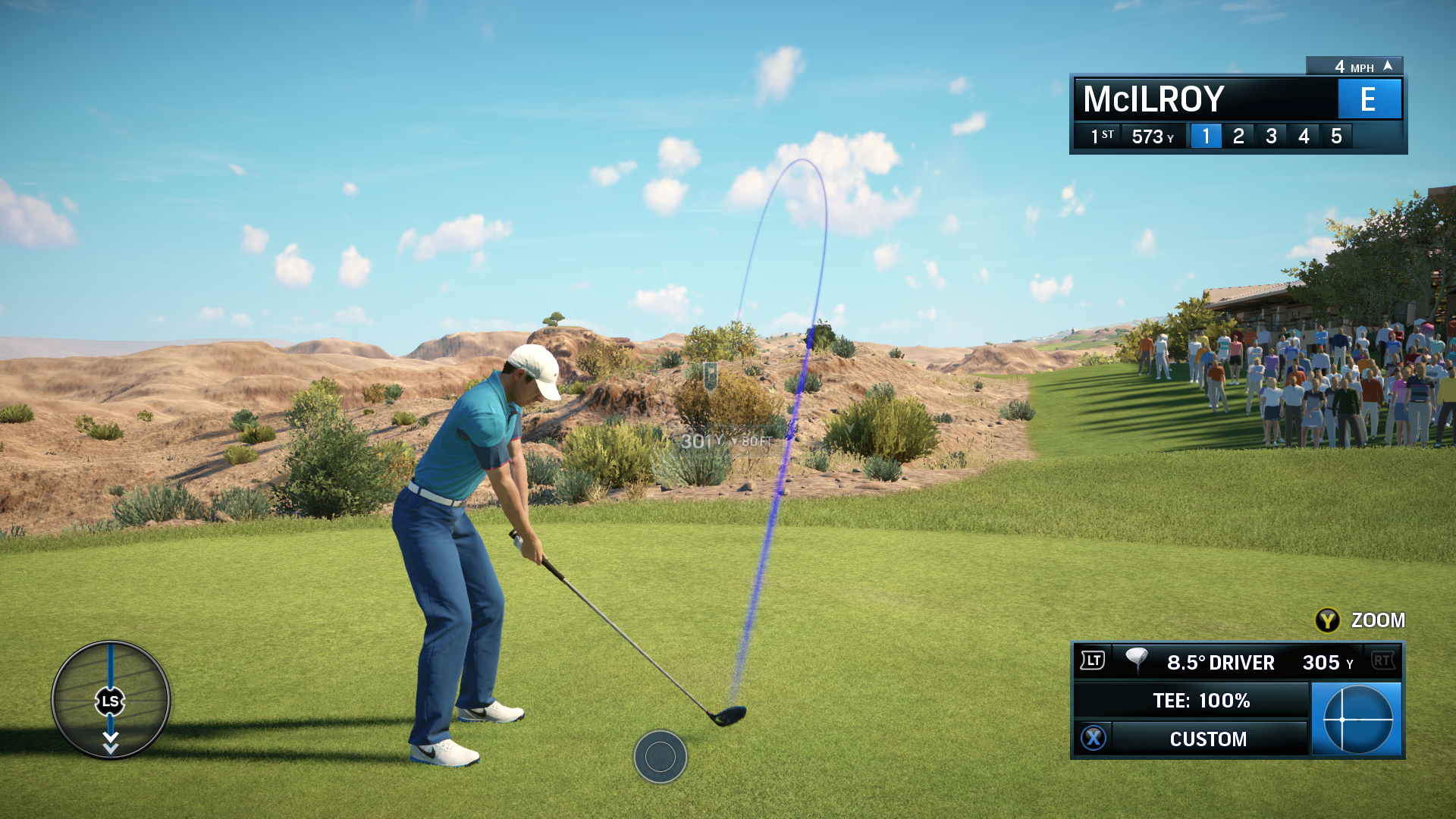EA brings some big changes to its long-running golf franchise.
Electronic Arts parted ways with golf star Tiger Woods in 2013, putting an end to the Tiger Woods PGA Tour golf simulation game series that had seen yearly releases since 1999. The publisher did not release a golf game in 2014, but it’s now prepped to launch an overhauled golf game with the world’s top golfer, three-time major champion Rory McIlroy, as the cover athlete. It hits Xbox One and PlayStation 4 this summer. But an even bigger change than the cover star is the engine that powers PGA Tour.
The Frostbite engine powers EA’s Battlefield games, and now it is being put to use for golf, which enables greatly improved visuals and allows developers to take better advantage of the higher processing power of the newer batch of game consoles.
With this change in engine and theme in mind, the developers threw out most of the systems from the older games and rebuilt PGA Tour. The Frostbite 3 engine allows for the streaming of course data, which means no load times, no boundaries, and no limitations. The entire course loads at once now, instead of the hole-by-hole setup of previous titles. EA says that this dramatically decreases wait time, giving players more time on the green.
I tried my hand at a few holes at a pre-E3 event in Santa Monica, and I saw firsthand how the Frostbite engine changes gameplay. The improvements to visuals take the courses and backdrops nearer to photorealism. High-resolution textures give the grass, rough, and even the surrounding rock faces an impressive shine. And with the entire course loaded at once, it’s fully possible to hit the ball to another nearby fairway. Doing so is not good for your score, but it certainly proves that EA was able to accomplish this feat.
Each course is tuned with its own personality, which means that the way the ball interacts with the different types of grass and vegetation is unique to each course. A ball will roll differently in drier or taller grass, for example. This lets the developers add more variety to the courses, moving beyond merely visual changes.
The classic three-click golf swing mode is in place, as are basic arcade controls, but if you really want a challenge, it has a pro tour mode that has players simulating a club swing with an analog stick. This is highly sensitive and has a steep learning curve. Worse, this mode prohibits the classic golf video game hole view, meaning that players are going to have to rely on skill and careful calculation to even make the green. I consider myself a seasoned golf video game fan, and I had trouble with this mode. Thankfully, players can switch between control modes freely.
The developers also took the opportunity to have some fun in this overhaul, adding in some new modes and a few imaginative courses. Fantasy courses range from imaginary country clubs to one inspired by Battlefield 4, including a battleship wreck on the third hole. It even has a course built on the rim of the Grand Canyon, complete with wildlife that roams the greens.
These changes are at odds with the series’ serious golf sim roots, but they’re well done, and breathe some fresh air into the game.
A new mode called EA Sports Night Club Challenge brings arcade-like challenges to special courses. These feature ball targets and hoops decorated with neon lights , and have players shooting for high score. It’s more target practice than golf, though.
Beyond this, the core remains golf simulation, complete with real-world courses and pros. It just looks and plays better now thanks to a ground-up rebuilding.
VentureBeat's mission is to be a digital town square for technical decision-makers to gain knowledge about transformative enterprise technology and transact. Learn More


